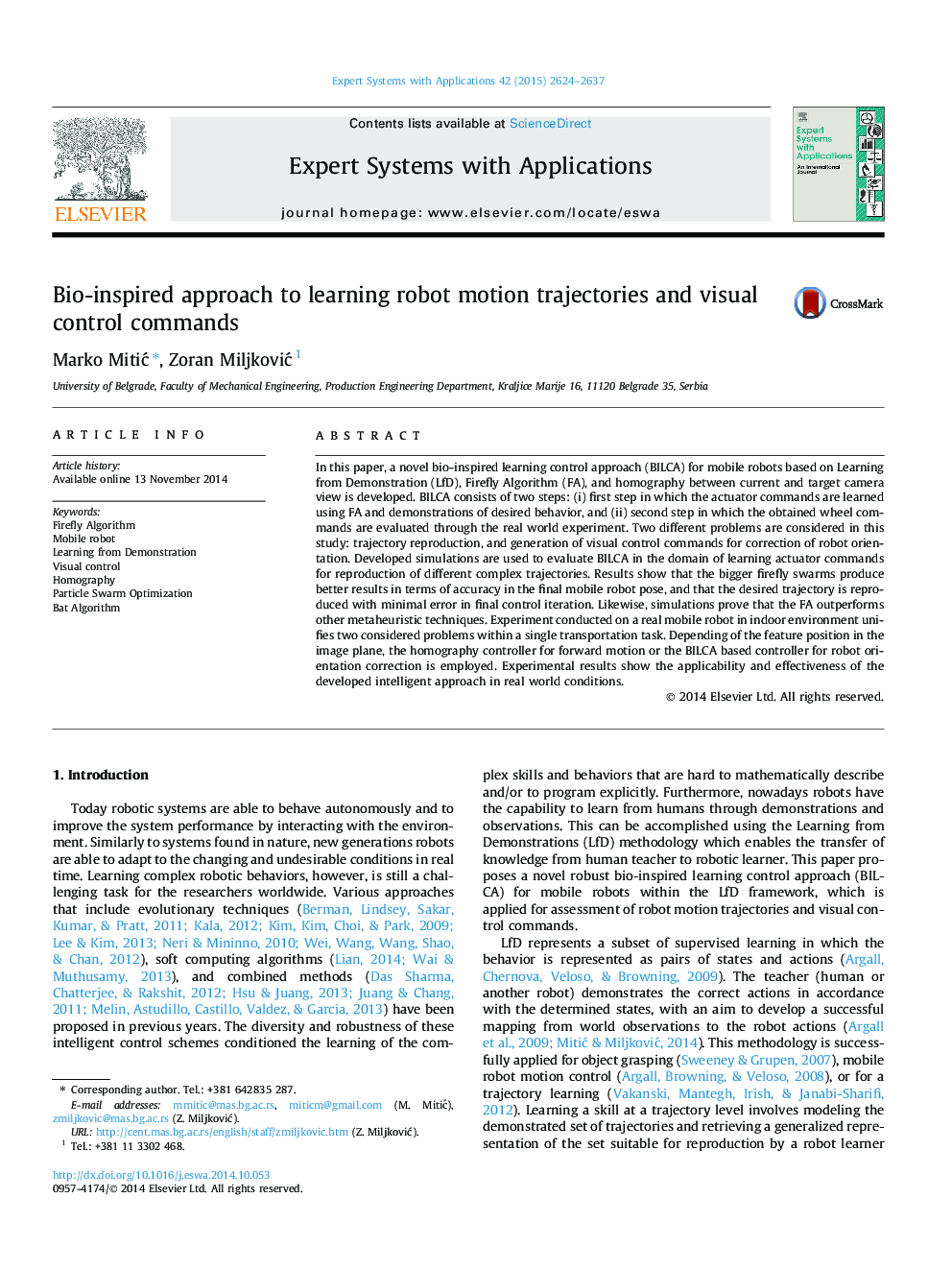| کد مقاله | کد نشریه | سال انتشار | مقاله انگلیسی | نسخه تمام متن |
|---|---|---|---|---|
| 382859 | 660794 | 2015 | 14 صفحه PDF | دانلود رایگان |
• We propose a robust bio-inspired learning control approach (BILCA) for mobile robots.
• Novel approach treats the robot trajectory learning and visual homing problems.
• First paper to integrate metaheuristic algorithm and trajectory learning problem in robots.
• First paper to integrate metaheuristic technique and visual homing strategy in robots.
• Various simulations and a real world experiment confirm applicability and usefulness of BILCA.
In this paper, a novel bio-inspired learning control approach (BILCA) for mobile robots based on Learning from Demonstration (LfD), Firefly Algorithm (FA), and homography between current and target camera view is developed. BILCA consists of two steps: (i) first step in which the actuator commands are learned using FA and demonstrations of desired behavior, and (ii) second step in which the obtained wheel commands are evaluated through the real world experiment. Two different problems are considered in this study: trajectory reproduction, and generation of visual control commands for correction of robot orientation. Developed simulations are used to evaluate BILCA in the domain of learning actuator commands for reproduction of different complex trajectories. Results show that the bigger firefly swarms produce better results in terms of accuracy in the final mobile robot pose, and that the desired trajectory is reproduced with minimal error in final control iteration. Likewise, simulations prove that the FA outperforms other metaheuristic techniques. Experiment conducted on a real mobile robot in indoor environment unifies two considered problems within a single transportation task. Depending of the feature position in the image plane, the homography controller for forward motion or the BILCA based controller for robot orientation correction is employed. Experimental results show the applicability and effectiveness of the developed intelligent approach in real world conditions.
Journal: Expert Systems with Applications - Volume 42, Issue 5, 1 April 2015, Pages 2624–2637
